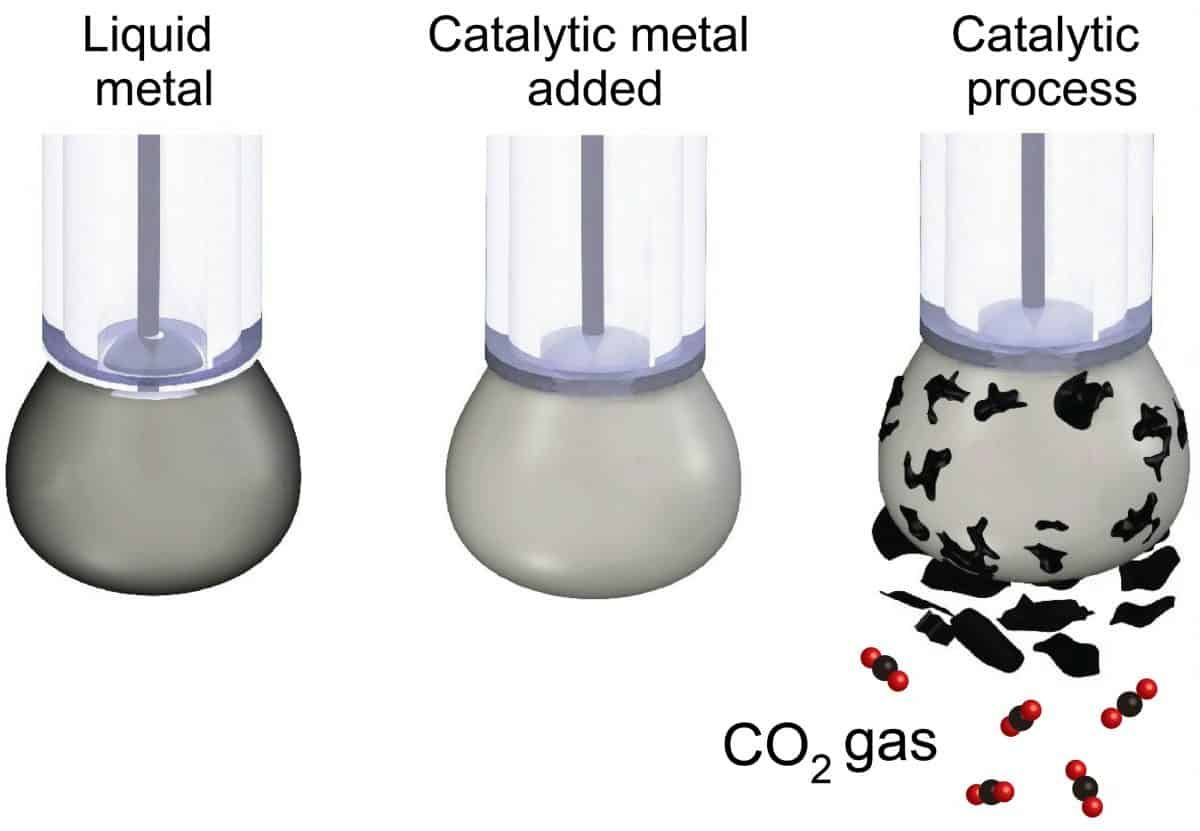
Scientists have turned carbon dioxide back into coal in a world-first breakthrough which could lead to cleaner air..
They say the ground-breaking technique can efficiently convert CO2 from a gas into solid particles of carbon.
The research team, led by RMIT University in Australia, developed the new technique which they say offers an “alternative pathway” for safely and permanently removing the greenhouse gas from our atmosphere.
Current technology for carbon capture and storage focuses on compressing CO2 into a liquid form, transporting it to a suitable site and injecting it underground.
But implementation has been hampered by engineering challenges, issues around economic viability and environmental concerns about possible leaks from the storage sites.
RMIT researcher Dr Torben Daeneke said converting CO2 into a solid could be a more sustainable approach.
He said: “While we can’t literally turn back time, turning carbon dioxide back into coal and burying it back in the ground is a bit like rewinding the emissions clock.
“To date, CO2 has only been converted into a solid at extremely high temperatures, making it industrially unviable.
“By using liquid metals as a catalyst, we’ve shown it’s possible to turn the gas back into carbon at room temperature, in a process that’s efficient and scalable.
“While more research needs to be done, it’s a crucial first step to delivering solid storage of carbon.”
Study lead author Dr Dorna Esrafilzadeh, of RMIT’s School of Engineering, developed the electro-chemical technique to capture and convert atmospheric CO2 to storable solid carbon.
To convert CO2, the researchers designed a liquid metal catalyst with specific surface properties that made it “extremely efficient” at conducting electricity while chemically activating the surface.
The carbon dioxide is dissolved in a beaker filled with an electrolyte liquid and a small amount of the liquid metal, which is then charged with an electrical current.
The CO2 slowly converts into solid flakes of carbon, which are naturally detached from the liquid metal surface, allowing the continuous production of carbonaceous solid.
Dr Esrafilzadeh said the carbon produced could also be used as an electrode.
She added: “A side benefit of the process is that the carbon can hold electrical charge, becoming a supercapacitor, so it could potentially be used as a component in future vehicles.”
“The process also produces synthetic fuel as a by-product, which could also have industrial applications.”
The study, published in the journal Nature Communications, also involved researchers from the University of Munster in Gemany, China’s Nanjing University, North Carolina State University in the US as well as other Australian universities.
By Stephen Beech